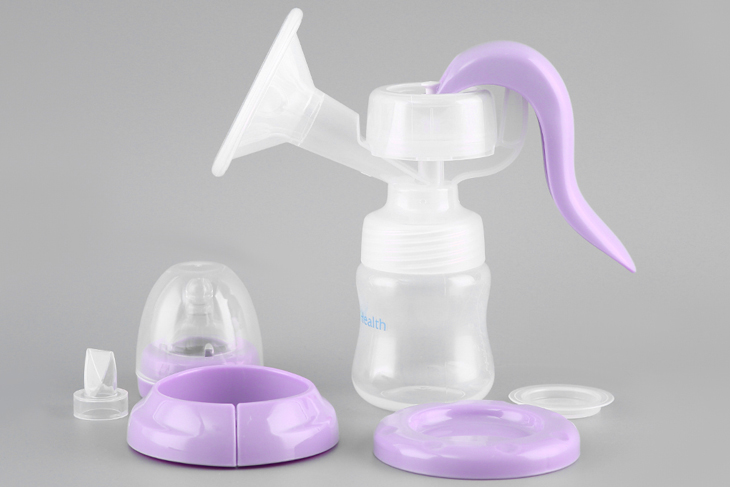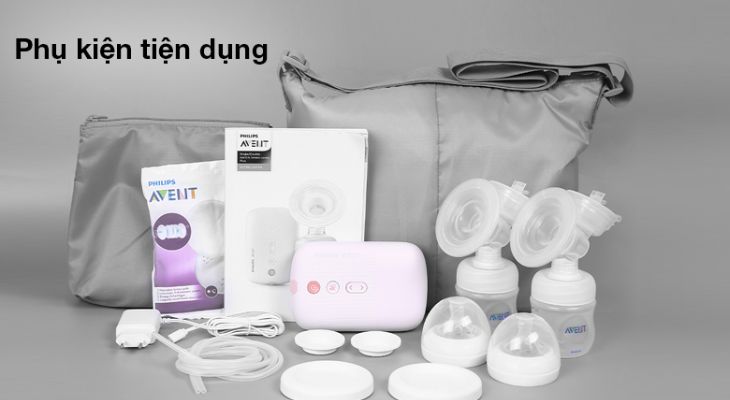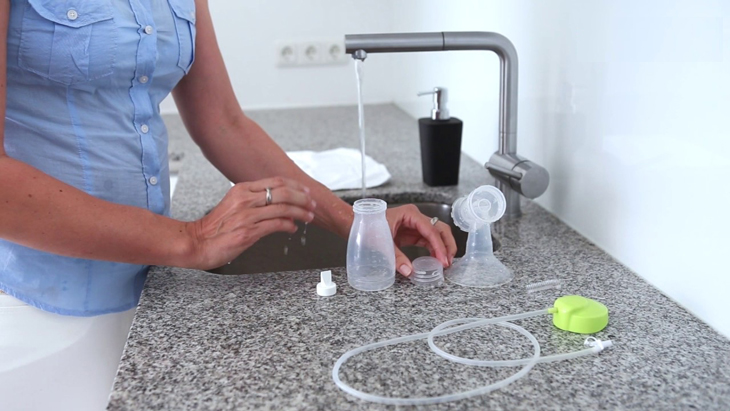1 Clean Your Breast Pump Before First Use
When you first purchase a breast pump, it’s important to thoroughly clean and sterilize it to remove any dirt or bacteria that may have accumulated during the manufacturing and retail process. Only then can you safely use it.

The BioHealth IE Basic double electric breast pump is designed with a compact and easy-to-disassemble structure for convenient cleaning.
2 Manual Breast Pump Cleaning Guide
To ensure your baby’s safety, follow these steps to properly clean your manual breast pump:
- Step 1: Disassemble all parts of the manual breast pump.
- Step 2: Use appropriate cleaning tools and specialized bottle cleaning solutions to scrub all parts of the pump.
- Step 3: Rinse with clean water.
- Step 4: Sterilize the pump parts using a bottle sterilizer, microwave, or by boiling them.
- Step 5: Prepare a clean cloth and cover the parts, allowing them to air dry.

The BioHealth EE Classic manual breast pump features easily detachable parts for convenient cleaning.
3 Electric Breast Pump Cleaning Guide
For electric breast pumps, it’s crucial to keep the silicone tubing and motor completely dry. Follow these steps for effective cleaning:
- For the motor: Some pumps have an enclosed motor that cannot be disassembled. In this case, use a dry cloth to wipe away any dust or dirt from the motor and the outer bag.
- For the silicone tubing: Thread a steel wire (longer than the tubing) wrapped in cotton and soaked in alcohol through the tubing from one end to the other. Repeat this process, then use dry cotton for a final pass.
For other parts of the electric breast pump, follow these steps:
- Step 1: Gently disassemble all parts, being careful not to tear delicate components like the white and yellow valves.
- Step 2: Use specialized cleaning tools and solutions to scrub the parts.
- Step 3: Rinse thoroughly with clean water.
- Step 4: Sterilize the cleaned parts.
- Step 5: Use a clean cloth to cover the parts and let them air dry in a well-ventilated area.

The Philips Avent Eureka SCF393.11 double electric breast pump comes with easy-to-clean accessories.
4 Important Notes on Breast Pump Cleaning
- Avoid using harsh chemical cleaners.
- Do not reassemble and use the pump until all parts are completely dry.
- Always store the pump parts in a dry place.
- Clean the pump immediately after use, as leaving it out can cause milk fats to solidify and make cleaning more difficult. If immediate cleaning is not possible, soak the parts in warm water, especially those that come into direct contact with milk.
- Wash your hands before cleaning the pump to prevent cross-contamination.
- Be careful when handling and cleaning the white and yellow valves, as they are delicate and can easily tear.
- If milk gets into the pump, take it to a service center for inspection.

Always clean your breast pump bottles immediately after use.































